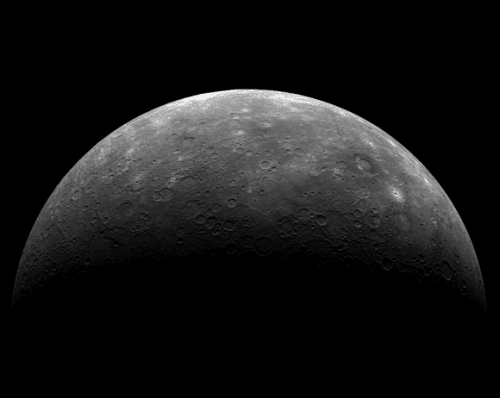Scientists: "heat" is decreasing at twice the rate of previous estimates

New data from the American space agency reveal that the planet Mercury - Mercury - is shrinking twice as fast as previously thought. Mercury is the smallest planet in our solar system, and the closest to the sun. Mercury has a very large iron core - even larger than Earth's. This core has been cooling ever since the planet was formed, more than four billion years ago. As it cools, the core shrinks, and this also affects the surface of the planet, which is made of a relatively thin layer of rocks. To examine the degree of shrinkage, scientists from NASA and the Carnegie Institution analyzed thousands of photographs of cliffs, craters and other land formations on the surface of the planet Hema.
The mission of the messenger
Only two spacecraft have so far visited the planet Hema. In the mid-seventies, the spacecraft "Mariner-10" passed by it three times, before it ran out of fuel. A decade ago another spacecraft was launched to it, "MESSENGER" (MESSENGER, acronym for MErcury Surface, Space ENvironment, GEochemistry, and Ranging, i.e.: a spacecraft to study the surface, environment, geochemistry and space environment of "Hama"). In a departure from its predecessor, MESSENGER was not content with flybys close to Mercury, but entered orbit around the planet, completing its mapping work and providing its first close-range photographs. Based on these photographs, the researchers examined thousands of landforms to assess how much the planet's land surface had shrunk. The geological analysis revealed that the circumference of the planet is smaller by about 14 km since its formation - twice and more than the estimates based on the photographs provided by "Mariner-10".
With that said, it should be noted that this is a tiny fraction of the circumference of the planet (less than 0.1% of a circumference of about 15,000 km). The new data are published in the journal Nature Geoscience. Scientists hope that they may improve not only our understanding of the processes that took place on Mercury, but also the understanding of the cooling processes of planets in distant solar systems, and help focus the search for such planets that may have developed life on their surface.
